My few days of astronautics
This year, it turned out to be quite good to participate in events related to Cosmonautics Day. Under the cut:
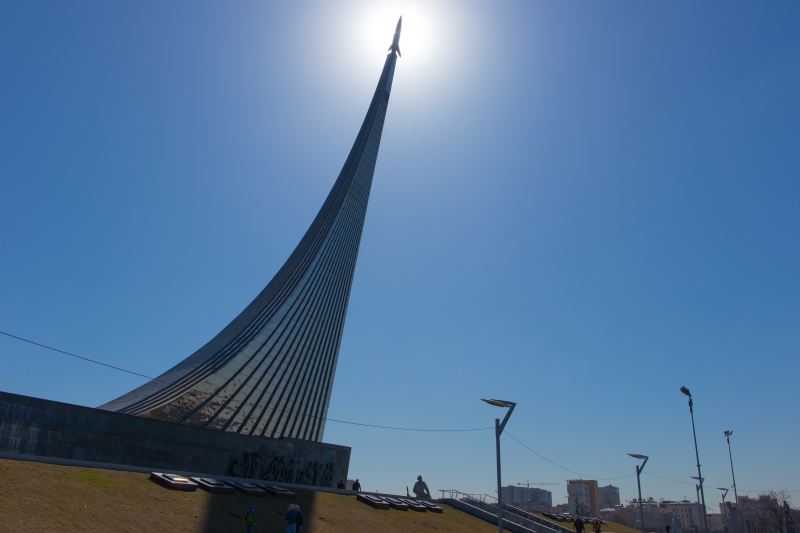
On April 6, in the Ufa Art Club in the framework of regular meetings called “Cultural Fridays” I gave a lecture “The Peace Space Atom”.
If the text is closer to you, or you want to dive deeper into the topic, the lecture is based on the following publications:
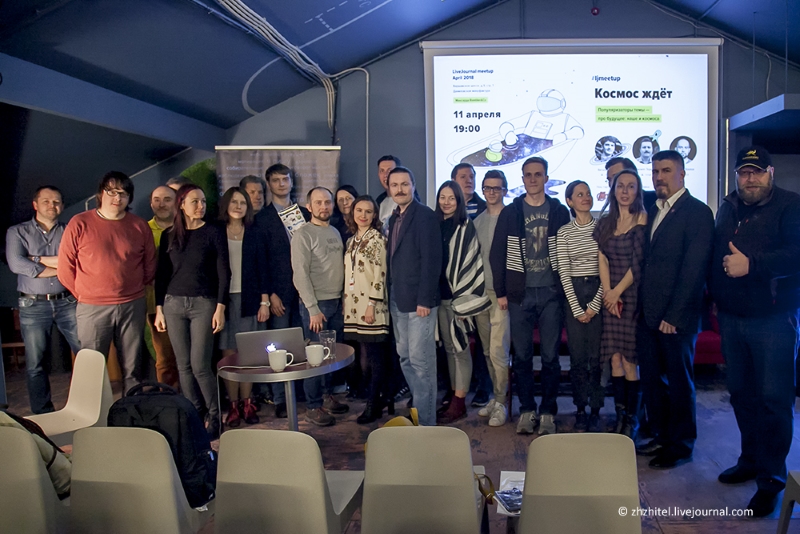
Photo: zhzhitel.livejournal.com
On the evening of April 11, a live journal was held under the general title “Cosmos awaits”.
Watch video on Facebook
Three speakers spoke (in order of reports):
My lecture was devoted to a brief overview of the cosmic achievements of mankind, as well as trying to answer the question of why we are seeing a stagnation in the space program. If it is very short - profitable applied cosmonautics is connected with the Earth, conditional colonization of Mars is unprofitable, while enthusiasts who are ready to fly “at least with a carcass, even a stuffed animal” do not have the means. But it's not scary, space is still cool and wonderful. In textual form, these same thoughts are more fully expressed in the publication The Concept of Cosmic Realism .
Alexander alien3 Khokhlov described in detail and in detail how to become an astronaut, what are the requirements for candidates, and briefly about manned space programs of different countries, work on the ISS and the future in the form of a near-moon station Deep Space Gateway.
Vitaliy zelenyikot Egorov gave a lecture “Cosmonautics: Expectations and Reality”, where he vividly showed how wrong the dreamers of the first half of the 20th century were and how people in space instead of the explorer and discoverer turned out to be the servants of scientific instruments.
Video interviews with speakers and audience reviews.
We all know that on April 12, 1961, Yuri Gagarin flew into space and became the first cosmonaut of mankind. But if you dig deeper, very few people know how the technique worked, how the flight went, what dangers the first cosmonaut was exposed to. I brought together several sources - the Orbiter space simulator available for free, the Vostok ship addon made by Russian enthusiasts, the First Orbit film, shot when the ISS was as close as possible to the Gagarin flight track, the recordings used in the reconstruction of Yandex 2016 And thanks to the site of the mayor of Moscow , we have an excellent record of reconstruction.
- Video of the new lecture "Peace Space Atom"
- Materials mitapa LJ "Cosmos awaits"
- Video reconstruction of the flight of Gagarin in Orbiter, shown in the Museum of Cosmonautics
- Photos of temporary exhibitions of the Museum of Cosmonautics

Peaceful cosmic atom
On April 6, in the Ufa Art Club in the framework of regular meetings called “Cultural Fridays” I gave a lecture “The Peace Space Atom”.
If the text is closer to you, or you want to dive deeper into the topic, the lecture is based on the following publications:
Mitap LJ "Cosmos awaits"

Photo: zhzhitel.livejournal.com
On the evening of April 11, a live journal was held under the general title “Cosmos awaits”.
Watch video on Facebook
Three speakers spoke (in order of reports):
My lecture was devoted to a brief overview of the cosmic achievements of mankind, as well as trying to answer the question of why we are seeing a stagnation in the space program. If it is very short - profitable applied cosmonautics is connected with the Earth, conditional colonization of Mars is unprofitable, while enthusiasts who are ready to fly “at least with a carcass, even a stuffed animal” do not have the means. But it's not scary, space is still cool and wonderful. In textual form, these same thoughts are more fully expressed in the publication The Concept of Cosmic Realism .
Alexander alien3 Khokhlov described in detail and in detail how to become an astronaut, what are the requirements for candidates, and briefly about manned space programs of different countries, work on the ISS and the future in the form of a near-moon station Deep Space Gateway.
Vitaliy zelenyikot Egorov gave a lecture “Cosmonautics: Expectations and Reality”, where he vividly showed how wrong the dreamers of the first half of the 20th century were and how people in space instead of the explorer and discoverer turned out to be the servants of scientific instruments.
Video interviews with speakers and audience reviews.
Reconstruction of the flight of Gagarin in the Museum of Cosmonautics
We all know that on April 12, 1961, Yuri Gagarin flew into space and became the first cosmonaut of mankind. But if you dig deeper, very few people know how the technique worked, how the flight went, what dangers the first cosmonaut was exposed to. I brought together several sources - the Orbiter space simulator available for free, the Vostok ship addon made by Russian enthusiasts, the First Orbit film, shot when the ISS was as close as possible to the Gagarin flight track, the recordings used in the reconstruction of Yandex 2016 And thanks to the site of the mayor of Moscow , we have an excellent record of reconstruction.
Photos of temporary expositions of the Museum of Cosmonautics, 19 photos, 5.5 MB
Нечастый случай, когда очереди радуешься. Космос интересен, и это замечательно. Ну и музей отличный — меняющиеся временные выставки делают разумным визит туда примерно раз в квартал даже для жителей Москвы.
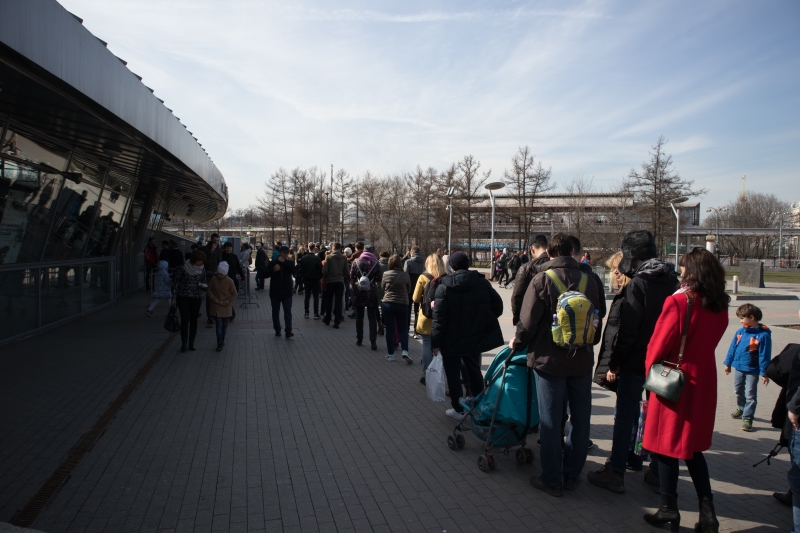
На улице стоит спускаемый аппарат корабля «Союз». На мой взгляд, его зря покрасили в равномерный черный цвет, обгоревшее разноцветное теплозащитное покрытие и красивее, и реалистичнее.
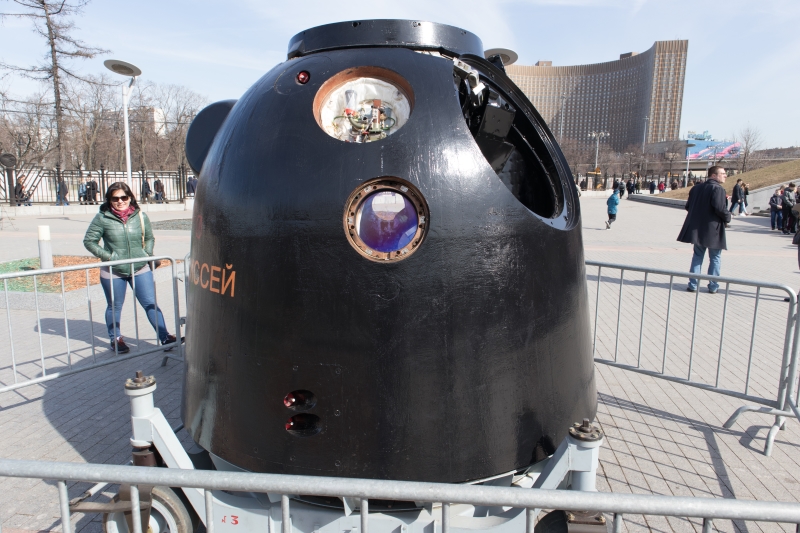
Технический люк крупным планом.
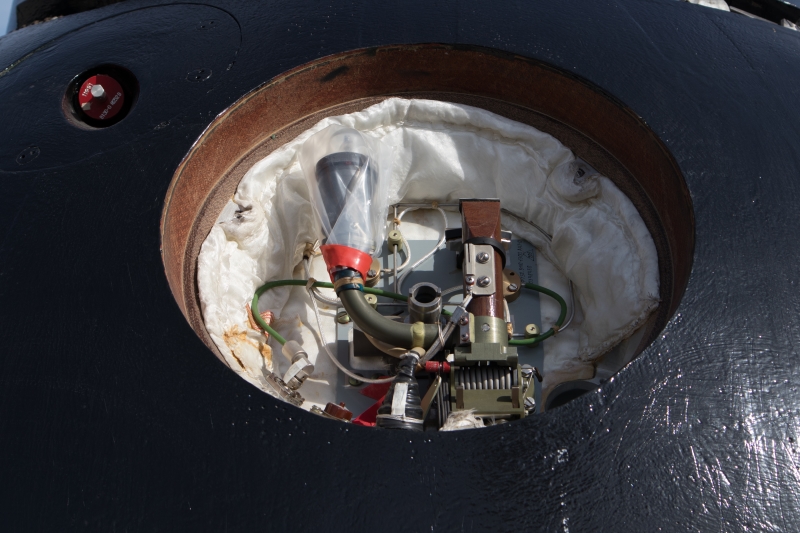
Самый интересный артефакт из недавно появившихся в постоянной экспозиции — подлинный спускаемый аппарат «Луны-16». Без особой помпы в витрине стоит немаленький предмет, который отправился с Земли на Луну и вернулся назад, впечатляющее зрелище.

Одна из временных экспозиций посвящена скафандрам и космическим костюмам. Общий вид зала.
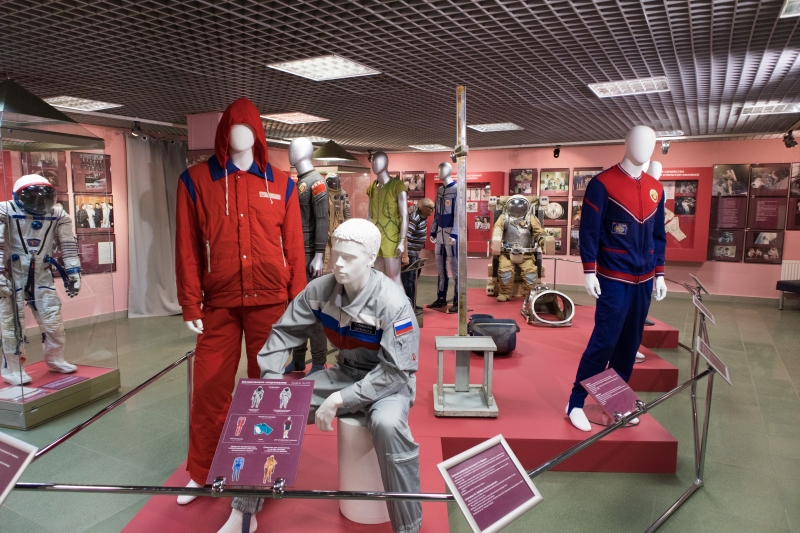
Интересные вещи открываются, когда снимается верхняя оболочка скафандра. Приходится стягивать конструкцию стропами, чтобы в случае разгерметизации корабля скафандр не раздулся до невозможности работать.

А это — кираса скафандра для работы в космосе. Отлично понятно, почему эти скафандры относят к жесткому типу.

Установка для перемещения и маневрирования космонавта.
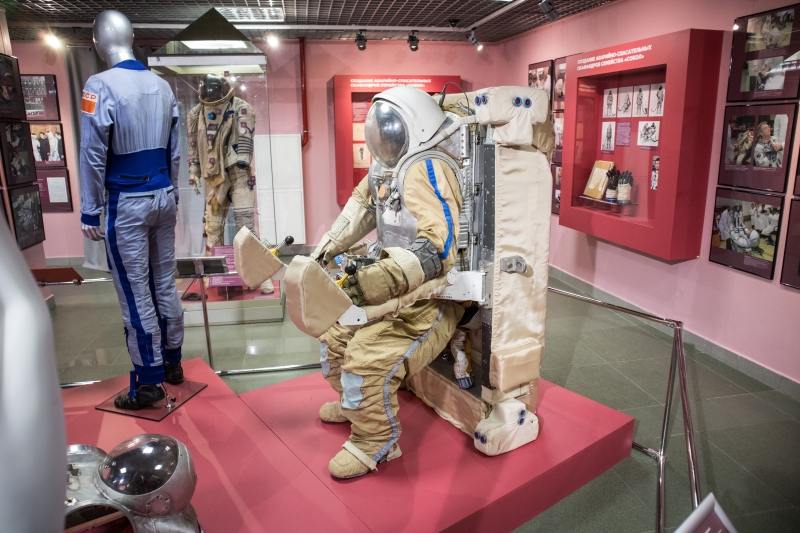
Экспозиция ФГУП «Космическая связь». Kinect в дальнем углу привлекает детей возможностью поиграть в управление спутника, размахивая руками.

Выставка, посвященная памяти Владимира Комарова.

Слева заметки Комарова по советской пилотируемой программе.
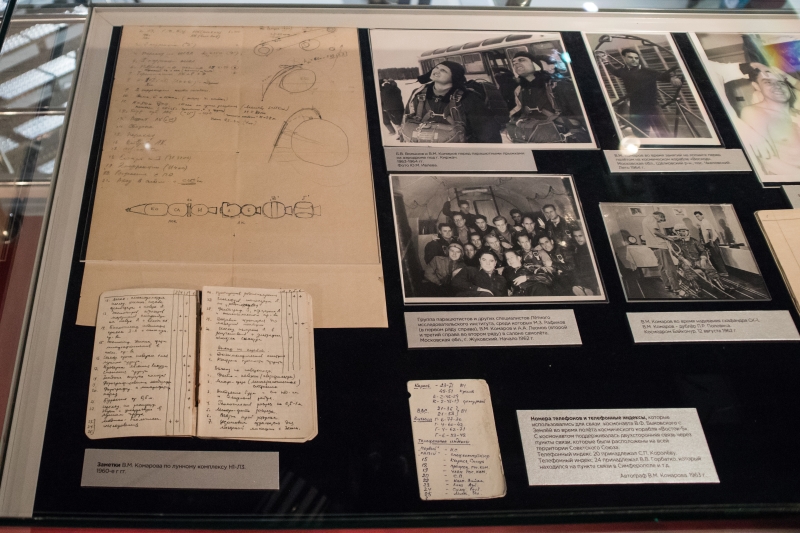
Очень милая своей наивностью и уверенностью в светлом будущем выставка советских плакатов.
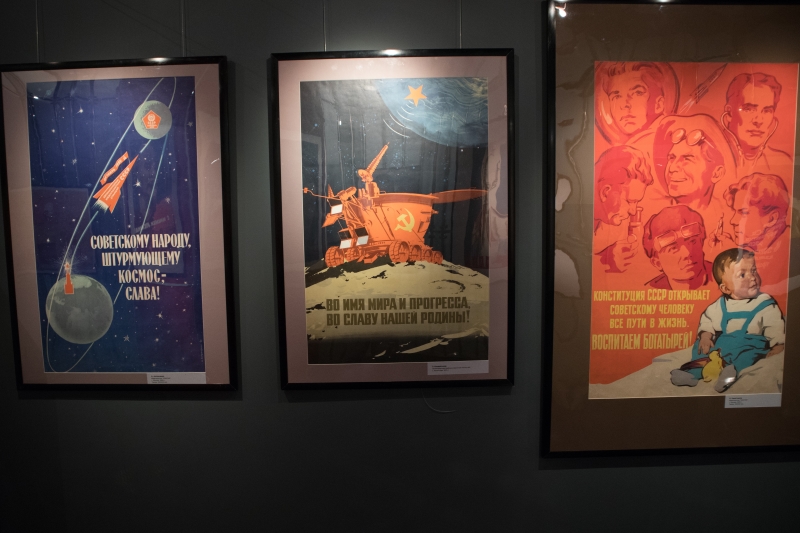

Уголок и коридор отведены под выставку культурных артефактов — картин, статуэток и прочего.
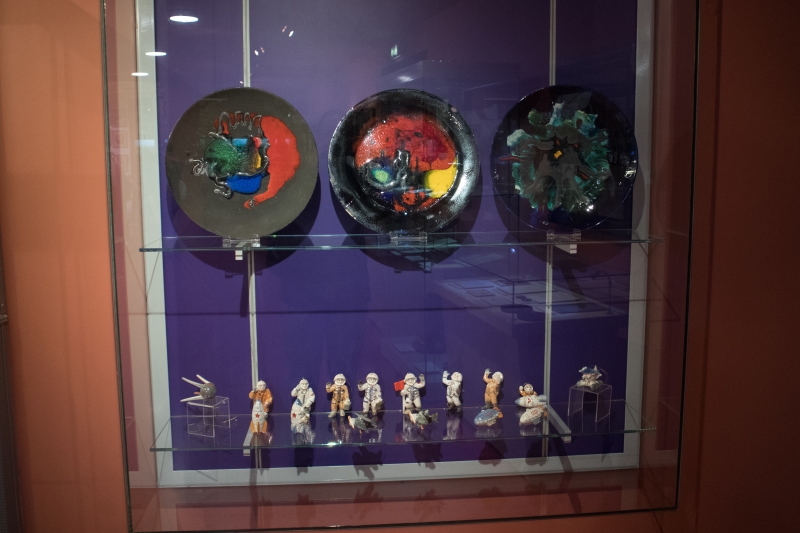


И внезапная приятная встреча — самая левая картина была на обложке советской книги с фантастической живописью «Наперегонки со временем», которую я помню с детства и до сих пор с удовольствием пересматриваю.
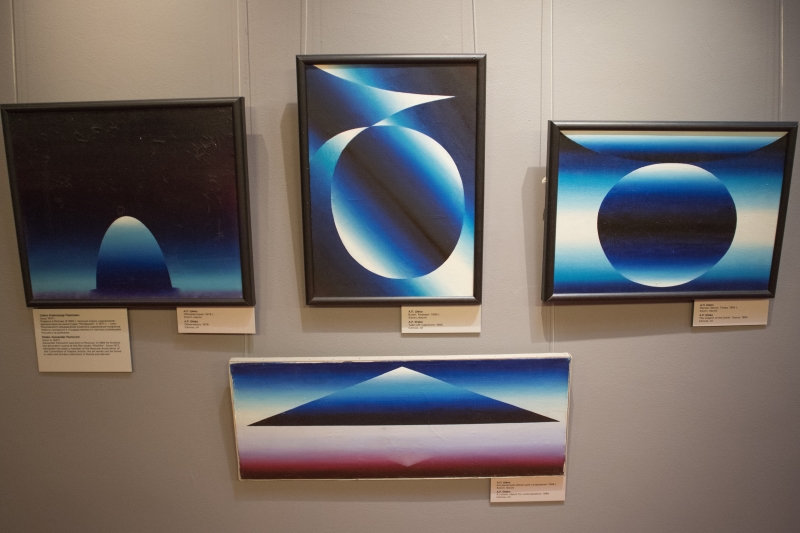
И последняя пара фотографий показывает симпатичную выставку космических картинок на спичечных коробках.
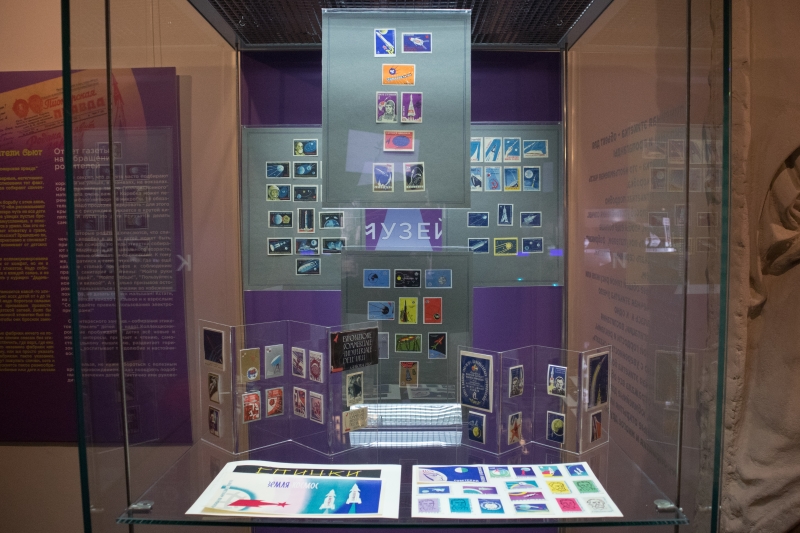
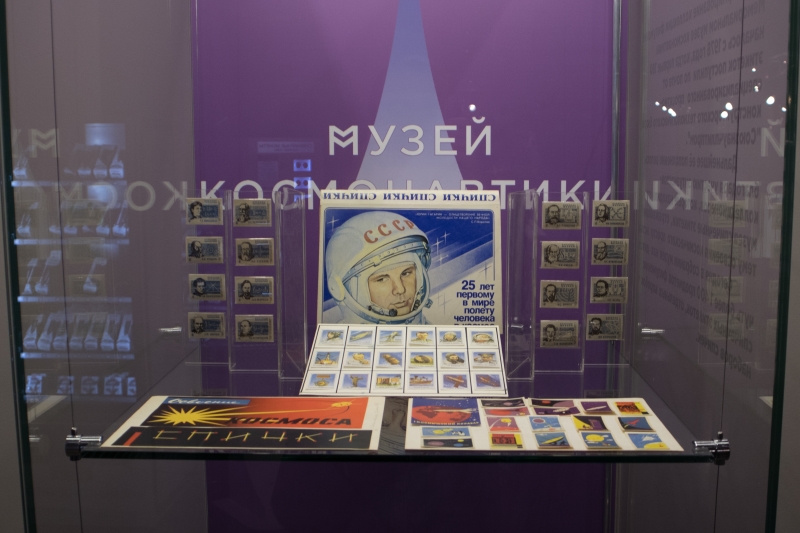

На улице стоит спускаемый аппарат корабля «Союз». На мой взгляд, его зря покрасили в равномерный черный цвет, обгоревшее разноцветное теплозащитное покрытие и красивее, и реалистичнее.

Технический люк крупным планом.

Самый интересный артефакт из недавно появившихся в постоянной экспозиции — подлинный спускаемый аппарат «Луны-16». Без особой помпы в витрине стоит немаленький предмет, который отправился с Земли на Луну и вернулся назад, впечатляющее зрелище.

Одна из временных экспозиций посвящена скафандрам и космическим костюмам. Общий вид зала.

Интересные вещи открываются, когда снимается верхняя оболочка скафандра. Приходится стягивать конструкцию стропами, чтобы в случае разгерметизации корабля скафандр не раздулся до невозможности работать.

А это — кираса скафандра для работы в космосе. Отлично понятно, почему эти скафандры относят к жесткому типу.

Установка для перемещения и маневрирования космонавта.

Экспозиция ФГУП «Космическая связь». Kinect в дальнем углу привлекает детей возможностью поиграть в управление спутника, размахивая руками.

Выставка, посвященная памяти Владимира Комарова.

Слева заметки Комарова по советской пилотируемой программе.

Очень милая своей наивностью и уверенностью в светлом будущем выставка советских плакатов.


Уголок и коридор отведены под выставку культурных артефактов — картин, статуэток и прочего.



И внезапная приятная встреча — самая левая картина была на обложке советской книги с фантастической живописью «Наперегонки со временем», которую я помню с детства и до сих пор с удовольствием пересматриваю.

И последняя пара фотографий показывает симпатичную выставку космических картинок на спичечных коробках.


